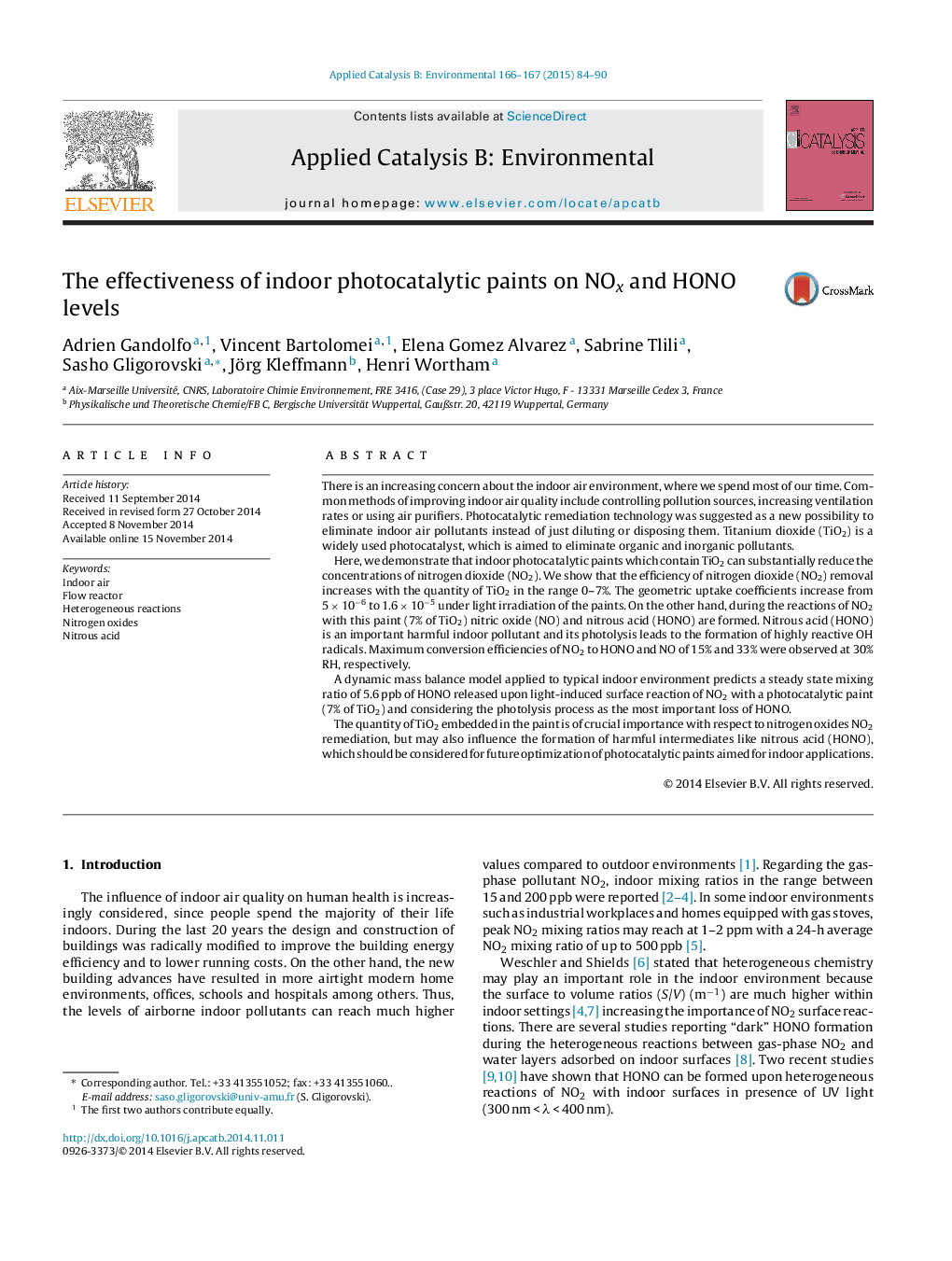| کد مقاله | کد نشریه | سال انتشار | مقاله انگلیسی | نسخه تمام متن |
|---|---|---|---|---|
| 45700 | 46421 | 2015 | 7 صفحه PDF | دانلود رایگان |

• The quantity of TiO2 embedded in the paint is crucial regarding the NOx remediation.
• The TiO2 content may influence formation of harmful by-products such as HONO.
• HONO formed with paint containing 7% of TiO2 is independent of the light intensity.
• A light-driven HONO source on paint (7% TiO2) varies with the relative humidity.
• Constant HONO value of 5.6 ppb is produced by paint with 7% of TiO2.
There is an increasing concern about the indoor air environment, where we spend most of our time. Common methods of improving indoor air quality include controlling pollution sources, increasing ventilation rates or using air purifiers. Photocatalytic remediation technology was suggested as a new possibility to eliminate indoor air pollutants instead of just diluting or disposing them. Titanium dioxide (TiO2) is a widely used photocatalyst, which is aimed to eliminate organic and inorganic pollutants.Here, we demonstrate that indoor photocatalytic paints which contain TiO2 can substantially reduce the concentrations of nitrogen dioxide (NO2). We show that the efficiency of nitrogen dioxide (NO2) removal increases with the quantity of TiO2 in the range 0–7%. The geometric uptake coefficients increase from 5 × 10−6 to 1.6 × 10−5 under light irradiation of the paints. On the other hand, during the reactions of NO2 with this paint (7% of TiO2) nitric oxide (NO) and nitrous acid (HONO) are formed. Nitrous acid (HONO) is an important harmful indoor pollutant and its photolysis leads to the formation of highly reactive OH radicals. Maximum conversion efficiencies of NO2 to HONO and NO of 15% and 33% were observed at 30% RH, respectively.A dynamic mass balance model applied to typical indoor environment predicts a steady state mixing ratio of 5.6 ppb of HONO released upon light-induced surface reaction of NO2 with a photocatalytic paint (7% of TiO2) and considering the photolysis process as the most important loss of HONO.The quantity of TiO2 embedded in the paint is of crucial importance with respect to nitrogen oxides NO2 remediation, but may also influence the formation of harmful intermediates like nitrous acid (HONO), which should be considered for future optimization of photocatalytic paints aimed for indoor applications.
Figure optionsDownload as PowerPoint slide
Journal: Applied Catalysis B: Environmental - Volumes 166–167, May 2015, Pages 84–90